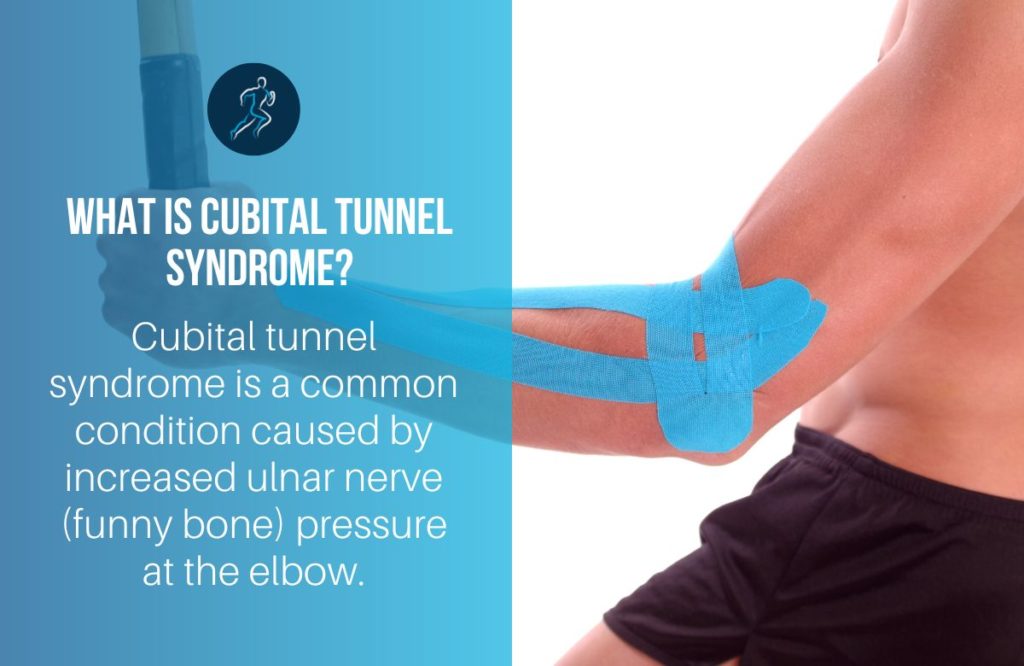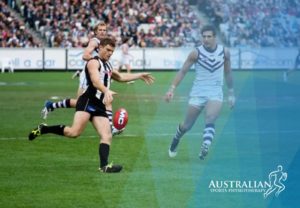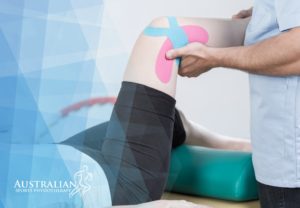If you are one of the many people suffering from cubital tunnel syndrome, then you know how painful and frustrating it can be.
Once you’ve first been diagnosed with cubital tunnel syndrome, it can be a bit of a shock, and you’re probably wondering what treatment options are available to you.
Fortunately, several physio treatments can help ease your symptoms and improve your quality of life.
What is cubital tunnel syndrome?
Cubital tunnel syndrome is a common condition caused by increased ulnar nerve (funny bone) pressure at the elbow. There is very little fat and subcutaneous tissue where the ulnar nerve crosses the elbow, indicating that the nerve is closer to the skin’s surface and more sensitive.
A nerve subjected to repeated or direct trauma can become painful and sensitive to pressure or movement. As a result, if a person strikes their inner elbow, the sensation can be similar to an electric shock.
If the nerve becomes swollen, it can impair the nerve’s ability to conduct impulses from the body to the brain and vice versa. You may experience altered or reduced sensation and decreased muscle strength if this occurs.
It can cause discomfort, pain, and loss of hand function.
What causes cubital tunnel syndrome?
Since many factors can contribute to this discomfort, a direct cause is not always apparent. Cubital tunnel syndrome can be caused by a variety of factors, including:
- Anatomy
The elbow joint connects many nerves and blood vessels in the body’s upper extremities. As a result, crowding in this area can put additional strain on the ulnar nerve. Furthermore, during movement, the ulnar nerve may not stay in place and instead snap backwards and forwards over a bony lump in the elbow, causing irritation.
- Pressure
The cubital tunnel is a small space with very little soft tissue covering it. As a result, the ulnar nerve is highly vulnerable to direct pressure, such as leaning on a firm surface with the arm. This pressure can cause nerve compression and numbness in the ring and little fingers.
- Stretching
Similarly, the nerve is vulnerable to stretching due to how it passes through the cubital tunnel. When a person keeps their elbow bent for an extended period, such as while sleeping, the nerve behind the elbow can be stretched.
Additional risk factors causing cubital tunnel syndrome
Certain activities or previous injuries may also increase a person’s chances of developing cubital tunnel syndrome. These could include:
- Repetitive or prolonged movements involving elbow bending or flexing
- Previous elbow fracture or dislocation
- Elbow joint swelling
- Cysts around the elbow joint
- Elbow arthritis or bone spurs
- It can occur, although less frequently, due to certain medical conditions, such as diabetes and haemophilia.
Common symptoms of cubital tunnel syndrome
The symptoms are similar to the pain you get when you hit a funny bone. When you hit your funny bone, you hit the ulnar nerve, which is located inside the elbow. The nerve passes through a passage known as the cubital tunnel. Cubital tunnel syndrome can occur when this area becomes irritated due to injury or pressure.
Cubital tunnel syndrome can develop suddenly after a traumatic event, such as an elbow fracture, or gradually over time. It usually starts with numbness, tingling, or burning on the inside of the forearm that spreads into the hand. Typical signs and symptoms include:
- Intermittent pain, numbness, and tingling caused by prolonged elbow bending
- Tenderness on the inside of the elbow, near the surface of the nerve
Later symptoms may include:
- An “ulnar claw hand” is a hand deformity in which the small and ring fingers bend inward
- Muscle weakness
- Muscle wasting of the hand’s small muscles
- Having difficulty gripping and holding objects
- More severe symptoms, particularly muscle wasting and hand deformities, should be assessed by a doctor.
Physiotherapy for cubital tunnel syndrome
Our physiotherapists at Australian Sports Physio will provide you with specialised treatment for cubital tunnel syndrome. Depending on the severity of your symptoms, you may be treated with the following:
- Advice on modifying your activities
- Joint mobilisations
- Strengthening exercises
- Neural gliding
- Stretching your arm muscles
Surgical treatments
Surgical intervention may be required when non-surgical treatments fail to reduce or alleviate cubital tunnel syndrome symptoms.
The primary goal of cubital tunnel surgery is to increase the size of the cubital tunnel while decreasing pressure on the ulnar nerve allowing more space and blood flow to support healing.

Final Thoughts on Physio Treatment For Cubital Tunnel Syndrome
Physiotherapists are experts in movement. We improve people’s lives by providing patient education, hands-on care and prescribed movement.
Physiotherapy treatment is one of the most effective methods for managing cubital tunnel syndrome and can help reduce inflammation, ease pain and improve mobility.
If you’re looking for an effective way to manage your condition, physio treatment may be your answer.
Book an appointment with one of our experienced physiotherapists today for a comprehensive assessment and customised treatment plan.









